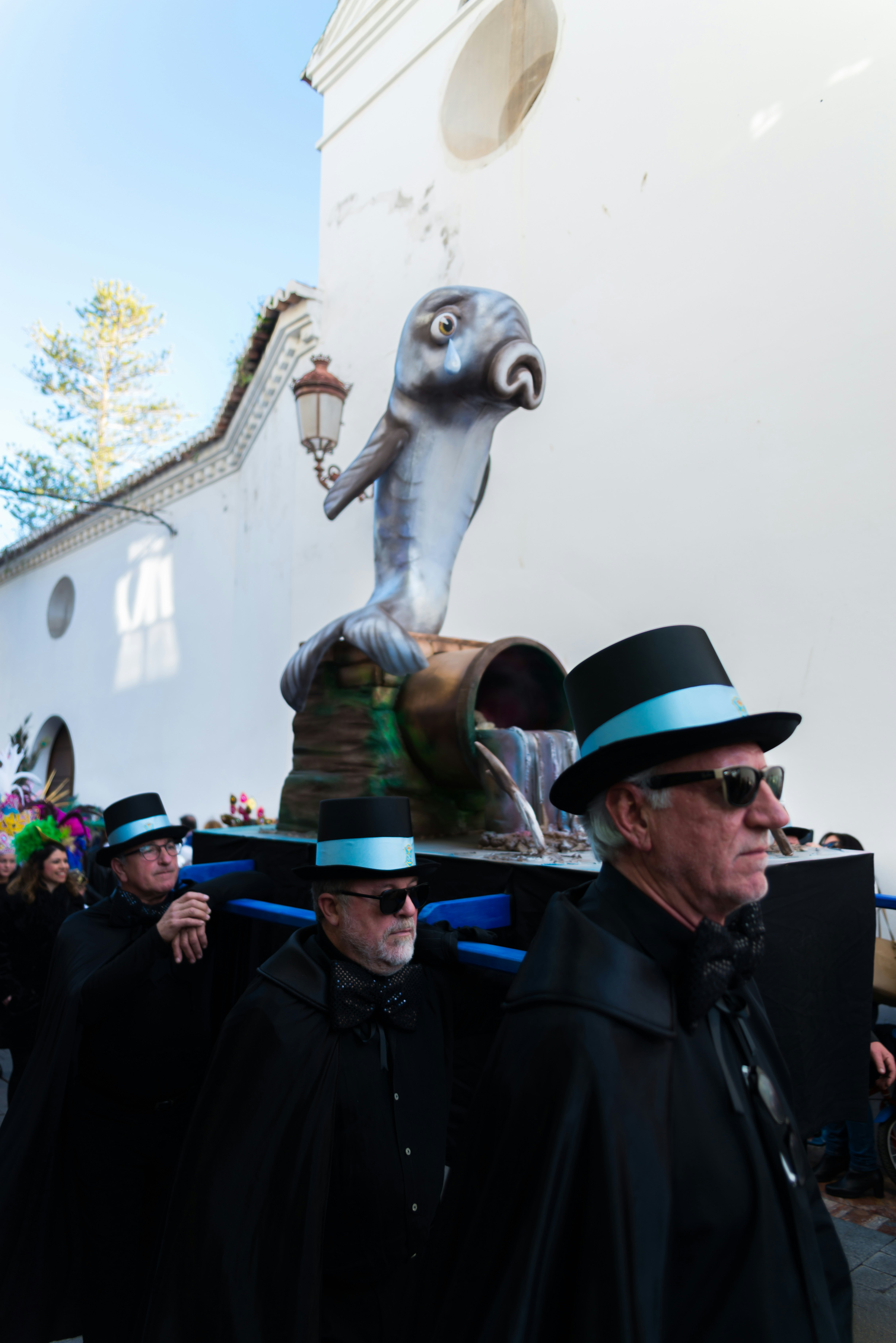

The Carnival in Santa Cruz de Tenerife is one of the biggest in Spain. Luciano de la Rosa / Shutterstock
In some places across the world, Carnival is simply a celebration with colourful parades, which can take place at any time of year. But in Spain it refers to the specific celebrations marking the big blowout before Lent. With traditions rooted in both Catholic and Pagan practices, a Spanish Carnival celebration typically features an array of colourful costumes, parades, street parties and concerts. Here's our guide to how and where to celebrate Carnival in Spain.
When do the celebrations take place?
As Easter changes each year, so do the dates for Carnival, but it always takes place in the week leading up to 40 days before Easter Sunday. In 2020, it will take place from 20–26 February. It begins on the day known as Fat Thursday (Jueves Lardero) and ends on Ash Wednesday, the beginning of Lent. The word Carnival comes from the Latin phrase 'carne levare', which means to ‘remove meat’, as many people were expected to give up meat for Lent (Cuaresma).
What happens during Carnival in Spain?
In Spain, there is typically a packed Carnival programme that lasts all week. It begins with the arrival of the Carnival King or Queen, looking to spread joy and mischief throughout the city, followed by parades, inventive costumes and music – usually samba-style drumming from Brazil. The week ends with the Entierro de la Sardina, or the Burial of the Sardine, a mock funeral procession to say goodbye to the revelry and the Carnival King or Queen, before the start of Lent.

The best places to celebrate Carnival in Spain
Carnival is celebrated all over Spain, but some parties are bigger than others. If you’re looking to make a special trip to Spain for the Carnival season, here are some of the best places to go.
Tenerife
Tenerife has one of the biggest and best Carnivals in the whole of the country. The Carnival here is more closely related to the type seen in Brazil and the Caribbean, with lots of glittery costumes and huge floats. There’s not only one big parade but several, as well as street parties and concerts. So if you can’t get to Rio, this might be the next best thing.

Sitges
Sitges is a small resort town located just down the coast from Barcelona. It may be one of the smallest places on our list, but it has one of the biggest and wildest Carnival celebrations, attracting more than 250,000 people. Like New Orleans’ or Sydney’s Mardi Gras, some Carnivals in Spain have become closely associated with the LGBTQ+ community, and this is particularly true with the Carnival in Sitges, which features lots of gay-friendly parties and drag queens. The Carnival takes place over seven days and there's variety of lively events.
Cádiz
Cádiz’s Carnival is probably closer in spirit to Venice's than Brazil's, and is the biggest celebration on mainland Spain. It’s also one of the oldest, dating back to the 16th century, and was the only Carnival that Franco couldn’t ban during his rule. With masked parades and processions, concerts, and dancing and singing in the streets, the Cádiz Carnival is all about humour and music, and features plenty of stand-up comedians, street theatre, puppet shows and a variety of concerts. The celebrations here last a whole 10 days.

Barcelona
Carnival in Barcelona may not be as wild as in Tenerife, Sitges or Cádiz, but you’ll still find plenty of celebrations to take part in. Each of the neighbourhoods in the city holds its own Carnival parade, with schools and associations representing their area with bright costumes and floats. One of the biggest parades – the King’s Parade – takes place in the barrio (district) of El Born. Like in Sitges, this one features lots of characters dressed in drag. After the parade, the Taronjada, a huge orange fight, takes place, like the Battle of the Oranges in Italy. Instead of real oranges, however, this one uses orange balloons and confetti.

Madrid
As the capital of Spain, it’s not surprising that Madrid holds some great Carnival events. But rather than taking place in the centre, the celebrations usually occur in some of the lesser-known neighbourhoods. The festivities in the capital include the Great Carnival Parade, plus a masquerade ball, as well as the traditional Burial of the Sardine. Don’t forget to try Madrid’s official Carnival dessert – a chocolate sardine.
Laza, Galicia
If you want to experience a Carnival with a bit of a difference, head to the town of Laza in Galicia. It’s here that the Os Peliqueiros Carnival takes place, where people dress up as odd characters wearing giant hats, traditional costumes and masks, holding cowbells and whips. The festivities culminate a big battle, where people throw things such as flour, eggs and earth at each other.
You might also like:
Latin America's most unique Carnival traditions
Mardi Gras for families: Carnival fun for all ages
Spotlight on: the carnival season in Athens
















